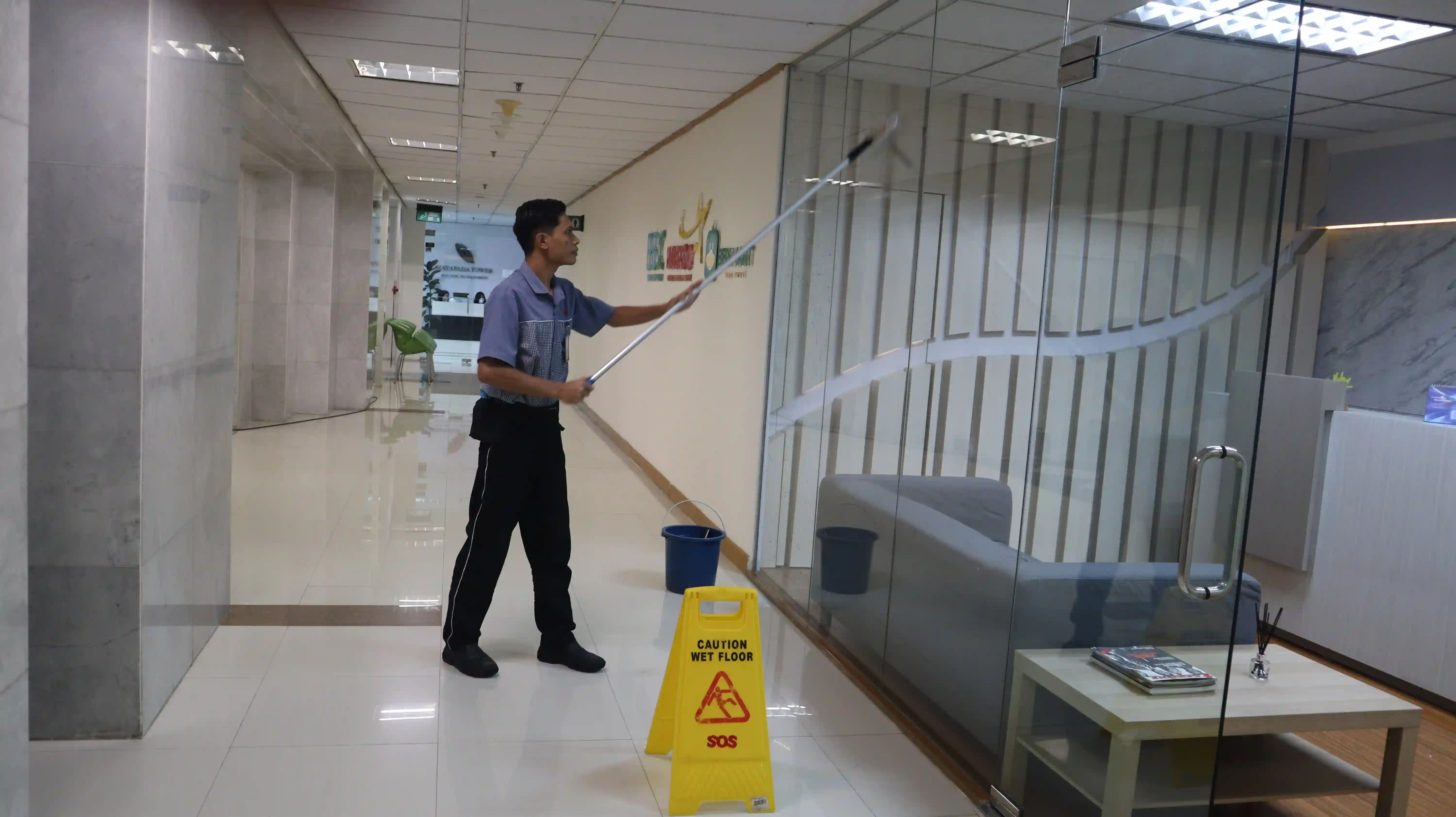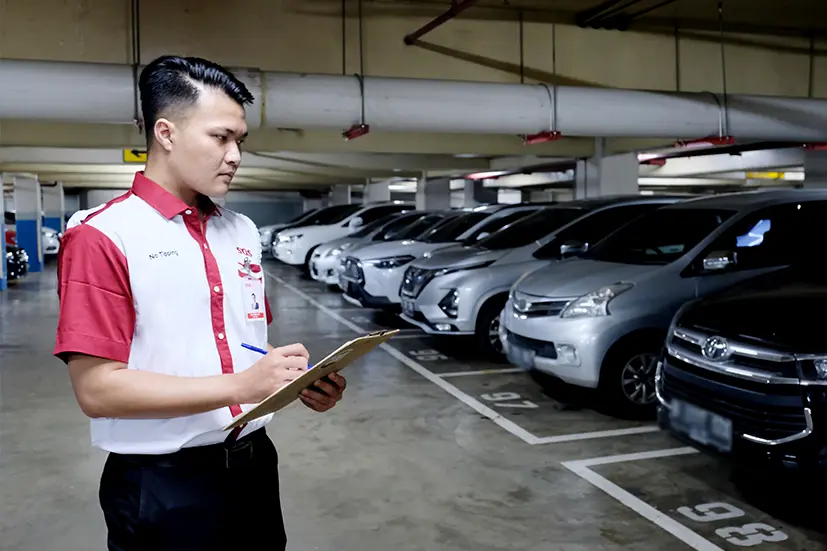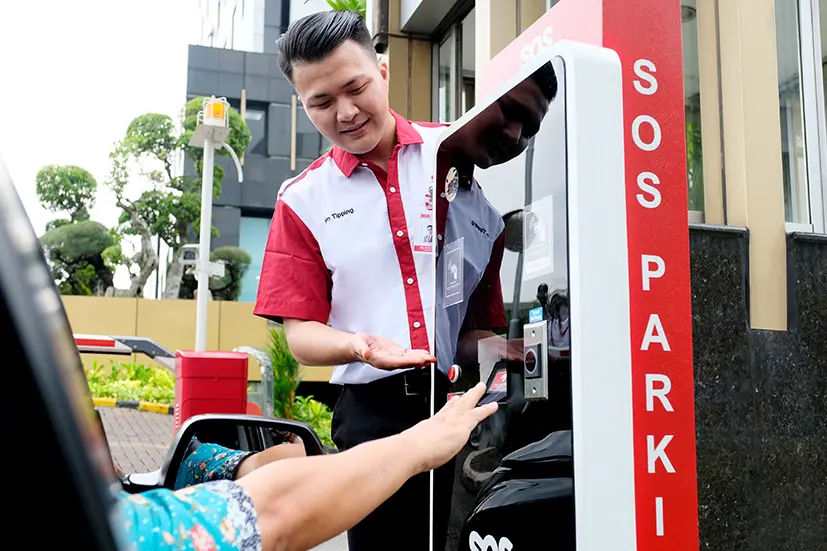Isolation Room Cleaning SOP to Prevent Infection Risks
24 October 2025

The isolation room cleaning SOP plays a vital role in maintaining the safety and cleanliness of healthcare facilities. Isolation rooms are designed to prevent infection spread from patients to surrounding environments, meaning every cleaning process must follow strict medical standards.
Let’s explore how to properly implement this SOP to create a safe and infection-free medical environment.
Ministry of Health Regulations for Isolation Room Cleaning SOP
The management standards for isolation rooms in healthcare facilities are regulated by the Ministry of Health and technical infection control guidelines. Below are key regulations that serve as the foundation for developing an isolation room cleaning SOP:
1. Air Exchange and Room Pressure
Isolation rooms must have a ventilation system that provides at least 12 air exchanges per hour to ensure adequate circulation.
In addition, the air pressure inside the isolation room should be slightly positive compared to adjacent areas to prevent cross-contamination.
2. Technical Guidelines for Isolation Rooms and Infection Control
The technical guidelines from the Ministry of Health specify that isolation rooms must be cleaned every time after use or before being used again, including routine deep cleaning when inactive.
These documents also regulate room design, air management, and sanitation installations to support effective hygiene practices.
Read Also: 7 Key Duties of Hospital Cleaning Services & Their Standards
How to Develop an Isolation Room Cleaning SOP?
The process of developing an isolation room cleaning SOP should be systematic to ensure every stage is implemented safely and in line with health standards. The goal is to prevent infection risks and protect both cleaning staff and patients.
Steps to create the SOP:
1. Define Objectives and Scope
Determine the purpose of the SOP, such as maintaining hygiene and preventing disease spread. Also define the scope — whether it applies to hospitals, clinics, or other healthcare facilities.
2. Identify Areas and Contamination Risks
Map out all isolation areas and supporting zones (corridors, decontamination rooms). Identify high-risk points requiring intensive disinfection.
3. Create Step-by-Step Procedures
List the sequence from equipment preparation, initial cleaning, disinfection, to waste disposal. Use cleaning agents and disinfectants approved by the Ministry of Health.
4. Establish Occupational Safety (K3) Standards
Mandate the use of gloves, masks, and complete PPE throughout the process. Ensure staff perform handwashing before and after cleaning.
5. Include Scheduling and Monitoring Mechanisms
Set cleaning frequency based on room activity level. Add reporting systems or checklists to ensure consistent and measurable implementation.
Example of an Isolation Room Cleaning SOP (According to Health Standards)
ISOLATION ROOM CLEANING SOP
(ISOLATION ROOM CLEANING SERVICE STANDARD OPERATING PROCEDURE)
Document Code: CS-ISO/004/2025
Prepared by: Cleaning Service Operations Division
Approved by: Infection Control Officer
Effective Date: January 2025
Purpose:
-
To establish standard cleaning procedures for isolation rooms in healthcare facilities to achieve optimal hygiene and safety levels in accordance with infection control principles.
-
To ensure all cleaning processes use chemicals and disinfectants approved by the Ministry of Health.
Scope:
This SOP applies to all cleaning staff working in isolation room areas and surrounding zones, including corridors, decontamination rooms, and other supporting areas in hospitals or medical facilities.
A. Preparation Before Cleaning
Before cleaning, the cleaning staff must ensure that the entire area is safe, sterile, and ready to be cleaned according to health standards. Steps include:
-
Checking the room’s condition to ensure no ongoing medical activity.
-
Wearing full PPE such as N95 masks, double gloves, face shields, and medical gowns in accordance with K3 standards.
-
Preparing cleaning tools and materials including sterile mops, chlorine-based disinfectants, and infectious waste containers.
-
Placing a “Sterile Area – Cleaning in Progress” sign at the entrance to warn medical staff and visitors.
B. Isolation Room Cleaning Procedures
This section outlines the main cleaning steps to prevent infection spread and maintain compliance with hospital hygiene standards:
1. Surface Cleaning
Focus on surfaces such as tables, door handles, medical tools, and direct contact areas:
-
Use disinfectants recommended by WHO or the Ministry of Health.
-
Clean from the least contaminated area to the most contaminated to prevent microorganism transfer.
-
Avoid splashing or movements that could spread pathogens through air or surfaces.
-
Include patient examination zones and surrounding bed areas.
2. Floor and Wall Cleaning
Floors and walls are high-risk contamination zones, requiring special care:
-
Use separate mops for isolation rooms and general corridors to avoid cross-contamination.
-
Disinfect floors and walls at least twice daily or after direct patient contact.
-
Use medical-grade cleaning chemicals safely to protect the hospital environment.
3. Equipment and Waste Handling
Proper equipment and waste handling are crucial to maintaining infection control:
-
Sterilize all cleaning tools before storage or reuse.
-
Separate medical waste from non-medical waste in designated infectious waste containers.
-
Cleaning staff must report any spills or hazardous incidents immediately.
Read Also: Hospital Security SOP: Essential Protocols for Medical Areas
C. Occupational Health and Safety (K3) Implementation
Implementing K3 standards is mandatory to protect cleaning staff from hazardous materials and infection exposure:
1. Use of PPE and Double Gloves
Cleaning staff must wear complete PPE, including N95 masks, face shields, and double gloves.
2. Chemical Use Control
Do not mix cleaning chemicals or disinfectants without supervisor approval to avoid harmful gas release or reduced disinfection effectiveness.
3. Isolation Room Ventilation Check
Ensure ventilation and air systems function properly to prevent gas exposure and maintain sterile air circulation.
4. Handwashing After Cleaning
Wash hands thoroughly with antiseptic soap or alcohol-based sanitizer before removing PPE to prevent microorganism transfer.
D. Cleaning Frequency and Schedule
Determining cleaning frequency and scheduling in the isolation room cleaning SOP aims to maintain consistent hygiene and prevent contamination buildup. The schedule should be adjusted based on medical activities and the number of patients in the isolation room. Here’s the recommended schedule:
1. Shift-Based Cleaning
Cleaning must be carried out during every shift change or after a patient leaves the isolation room. This ensures that the room is always ready for use without infection risk.
2. Daily Deep Cleaning
In addition to routine cleaning, perform thorough disinfection at least twice a day, covering floors, walls, touch surfaces, and medical equipment used for patient care.
3. Hygiene Audit and Supervision
Regular cleanliness audits should be conducted by hospital supervisors or the outsourced cleaning service provider. Evaluations are performed to assess compliance with the cleaning service SOP and ensure that all isolation safety standards are properly implemented.
E. Monitoring and Evaluation
Monitoring and evaluation are essential components of the hospital cleaning service SOP to ensure that the cleaning of isolation rooms is carried out according to infection control standards. Below are the key procedures to follow:
1. Supervision by Infection Control Personnel (IPC Nurse)
Each cleaning activity must be directly supervised by an IPC Nurse or infection control officer. These personnel are responsible for ensuring that cleaning procedures comply with Ministry of Health guidelines and hospital protocols.
2. Visual Inspection of Isolation Room Cleanliness
After cleaning, a visual inspection should be conducted to assess the cleanliness of floors, walls, and areas surrounding patient beds. The inspection also includes checking room odor and air quality to ensure a sterile and comfortable environment.
3. SOP Compliance Audit and Evaluation
Audits are performed by reviewing cleaning log sheets and assessing staff adherence to the hospital cleaning service SOP. This evaluation serves as the foundation for improving cleaning service quality and maintaining optimal hygiene standards in isolation rooms.
The Importance of Professional Cleaning Services for Isolation Room SOP Implementation
The success of isolation room cleaning SOP implementation heavily depends on the skills and discipline of professional cleaning staff. Trained personnel can ensure every process runs safely, hygienically, and in accordance with healthcare standards.
SOS, a trusted Jakarta outsourcing company, provides professional cleaning staff who are:
-
Trained to handle high-risk and chemical materials safely.
-
Equipped with certified tools compliant with Ministry of Health regulations.
-
Disciplined in following all cleaning SOPs under strict supervision in hospital environments.
Read Also: 10 Essential Hospital Cleaning SOPs You Must Understand
Maintain Your Medical Facility’s Hygiene Professionally with SOS
Ensure that the isolation room cleaning process in your healthcare facility is carried out according to medical and K3 (Occupational Health and Safety) standards with support from Jakarta’s professional outsourcing cleaning service — SOS.
The SOS professional team is ready to help maintain the cleanliness, safety, and operational efficiency of your medical facility.
What you’ll get:
-
Certified cleaning personnel trained in infection control.
-
Use of medical-grade disinfectants and PPE compliant with hospital standards.
-
Strict supervision to guarantee sterile and consistent cleaning results.
Contact SOS today for professional, safe, and trusted healthcare facility cleaning solutions.



